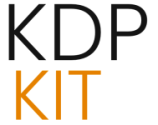Digital Publishing: Your 2025 Guide to What’s Next
Digital Publishing: Your 2025 Guide to What’s Next

Hey there! So, publishing? It’s really not what it used to be, right? Gone are the days when everything was just print, print, print. Now, it’s all about this huge, ever-changing digital world. And get this, it’s not just about slapping stuff online; it’s a whole new way we make, share, and even read content. As we’re cruising through 2025, digital publishing is still the hot topic, full of new ideas, lots of talk, and everyone trying to keep up. Things are changing fast, but the industry’s holding its own, thanks to new tech, how we all like to consume stuff now, and different ways of making money. This whole story of change is super important if you wanna know where media and information are headed.
The Internet’s Big Hug on Publishing
The Internet: A Game Changer
Let’s be real, the internet has totally flipped the publishing world upside down. It’s become this amazing, essential tool for anyone involved – whether you’re a scholar, a creator, or just someone who likes to read. Because it’s so easy to access and reach so many people, information is way more available to everyone. It’s like the old gatekeepers are gone, and now anyone can create and share their own stories and knowledge. It’s pretty wild how it’s blurred the lines between who makes content and who just consumes it.
Knowledge Goes Digital
Remember when Google started this massive project to put millions of old and out-of-print books online? That was back in 2004, and it was a huge deal, making tons of knowledge accessible digitally. Microsoft and Amazon did similar things too. Sure, there were some bumps in the road with copyright stuff, but these efforts really paved the way for a future where we can easily get our hands on so much information. It’s fundamentally changed how we learn and do research.
Print vs. Digital: The Big Switch
Print Money Woes
Okay, so when digital media and tech really took off, it hit the traditional print publishing industry pretty hard. The money-making streams that used to keep newspapers and magazines afloat? Yeah, they’ve shrunk a lot. For example, newspaper publisher revenue dropped by a massive 52.0% between 2002 and 2020. And magazines? Their revenue fell by 40.5% in the same timeframe. It’s all because we’ve started to prefer getting our news and entertainment online.
Reading Less on Paper
You can totally see this shift when you look at circulation numbers. The number of U.S. daily newspapers people bought on weekdays went from 55.8 million in 2000 all the way down to 24.2 million by 2020. That’s a huge drop in people reading physical papers, showing how much we like the ease and convenience of online news. Plus, digital formats are just cheaper – no printing or shipping costs – which makes sense why publishers are pouring their energy into their online presence.
What’s Cooking in Digital Publishing in 2025?
AI is Taking Over (Sort Of)
Artificial intelligence (AI) is definitely going to be a major player in digital publishing from 2025 onwards. AI is popping up everywhere, helping with creating content, editing, and even how it’s formatted. AI can help create cool video stories that make editorial work better and help target content more precisely. It’s also speeding up editing and marketing, with tools that suggest better wording and AI that figures out what readers like so ads can be more targeted. Some publishers are even using AI to write book descriptions that help people find them easier.
Using Content Again and Again
With budgets getting tighter and everyone wanting more content, reusing existing content has become a really smart move for digital publishers. We know people consume content on all sorts of platforms now – from social media to newsletters to short videos. So, publishers are finding ways to get the most out of everything they create. What used to be a single product, like a magazine, is now being chopped up and used in different ways across many channels. This means content is everywhere, on all your devices. It’s a great way to do more with less and make sure your content reaches as many people as possible.
Your Data is Gold
Since those third-party cookies are going away and privacy rules are getting stricter, focusing on your own data – what we call first-party data – is super important. Publishers are really trying to build direct relationships with readers to get a better picture of who they are and what they do. This is all about making things more personal to keep readers interested and loyal. Instead of just looking at likes or shares, it’s about making real connections. Tools called Composable Customer Data Platforms (CDPs) are becoming popular because they’re flexible and help manage data, which is key for publishers in this new, cookie-less world.
Audiobooks and AI Voices
The audiobook market is still booming, and some people think it might even start making more money than print books in certain areas. This is happening because more people want to listen to content while they’re out and about, AI narration is becoming more affordable, and subscription services are offering more choices. By 2025, AI narration is expected to be pretty common, which will help authors and publishers get into this profitable market and make audiobooks sound even better for listeners.
Subscriptions and Making Money in New Ways
Publishers are really branching out to make money, not just relying on ads and subscriptions like before. They’re trying things like sponsored content, affiliate marketing, hosting events, and even creating online courses. Subscription services like Kindle Unlimited and digital libraries are also getting more popular, giving readers access to lots of content for a good price, and giving authors a steady income. This variety is super important for staying financially healthy in today’s fast-changing digital world.
Genre Fiction is Back, Baby!
Genre fiction is making a big comeback, with readers who love specific types of stories actively looking for them, whether they’re shopping online or in actual bookstores. This just shows that good stories in particular genres still have a huge appeal. Plus, with more independent publishers popping up and selling directly to customers, there’s a bigger focus on niche markets and building strong communities around those interests. These smaller players are finding clever ways to work efficiently, often using AI for things like designing book covers and marketing, which helps them get great results without needing huge budgets.
How Digital Publishing Changed the Old Guard
Print Media’s Makeover
Digital publishing has really pushed traditional print media to change a lot to stay relevant. Moving from print to online platforms is a clear sign of this digital transformation. Newspapers and magazines have had to build really good online versions of themselves. This shift is happening because online platforms are so easy to access and use, giving people instant news and articles, which naturally means fewer people are reading the physical copies.
Challenges for Old Media
Traditional media outlets are facing a bunch of hurdles in this digital era. Think about advertising money moving online, the rise of those catchy but sometimes misleading “clickbait” headlines, and people not trusting media as much because of fake news. When there’s pressure to publish quickly, accuracy can sometimes suffer, leading to mistakes and the spread of false information. To keep up, traditional media needs to learn new digital skills, carefully decide where to put their resources between old and new platforms, and really focus on making sure their content is real and trustworthy in a world full of questionable information.
Social Media’s Role in Spreading the Word
Social media platforms have become super important for getting news and entertainment out there, forcing traditional media outlets to change how they distribute their content. The way social media lets people interact in real-time and share things easily creates both opportunities and problems for traditional platforms. They often struggle to keep up with how quickly content can go viral. This means they really need to think strategically about how to use social media for distributing content and connecting with their audience.
The Future of E-Books and Digital Libraries
Reading Gets a Digital Upgrade
New technologies are really changing how we read, making “digital reading” a whole new experience. Better screen technology, like super high-resolution displays, means reading on digital devices is getting much closer to reading on paper. Plus, things like screens that can be separated and lightweight laptops are making e-paper and digital reading even more practical and appealing.
Digital Libraries: Hotspots for New Ideas
Digital libraries are becoming really important meeting places for new technology and social changes. They help different systems work together and create connections all over the world, bringing different cultures together through collections in many languages. The fact that more universities are supporting digital libraries for their students shows how much they’re recognized as key places for learning and research.
New Ways to Make Money
The digital publishing world is always coming up with new business models and ways to make money. You see lots of different approaches, like free versions with ads, paid premium versions, paying for just parts of content, and flat-rate subscriptions. The ability to print on demand, thanks to personalized printers, also opens up new income streams. As the industry gets more established, publishers are looking for creative ways to stay financially stable, moving beyond just relying on ad revenue.
What Publishers and Creators Need to Know in 2025
The “Zero-Click” Challenge
Publishers are increasingly dealing with this “zero-click” trend, where AI-powered search results and quick answers mean people don’t always click through to websites, which can hurt traffic and ad revenue. This, along with people shifting towards podcasts and videos, means publishers need to focus on optimizing for search and finding other ways to make money besides traditional ads. Publishers should really invest in connecting directly with their users and exploring different ways to earn income to deal with these challenges.
Being Flexible and Creative is Key
The digital publishing industry in 2025 is all about constant change, so publishers and authors need to be super adaptable and creative. Using the latest technology, building strong communities, and finding and serving specific niche markets are essential for doing well in this evolving environment. Publishers who jump on trends like using AI, repurposing content, and focusing on reader data are the ones most likely to succeed.
Keeping it Real and Trustworthy
As the digital world gets more complicated, with AI creating content and so much information flying around, it’s super important to maintain trust and authenticity. Publishers need to make sure they’re being ethical, especially when it comes to AI bias and who owns the content. Being open about how content is created and about intellectual property will be crucial for building and keeping readers’ trust. The fact that people trust media less means we need to recommit to accurate, reliable, and ethical reporting.
The Bottom Line: Digital and Always Changing
The direction digital publishing is heading in 2025 and beyond is pretty clear: it’s an industry that’s always changing, using technology, and really understanding how to connect with audiences. From the power of AI to the importance of your own data and reusing content, publishers and creators have to stay flexible and think ahead. The challenges in this evolving digital landscape are big, but they come with huge opportunities for new ideas, connections, and growth. Being able to adapt, embrace new tech, and build real relationships with audiences will be what makes people successful in this exciting new era of publishing.






